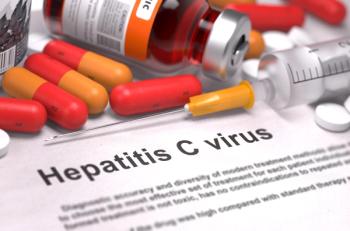
Nine-Step System Proposed to Evaluate HIV Preventative Care
New system could improve the implementation of pre-exposure prophylaxis-based care for HIV prevention.
A Brown University-based investigative team is proposing a 9-step system to evaluate how pre-exposure prophylaxis (PrEP) is implemented in clinical practice for HIV.
In a study published in the journal AIDS, the investigators sought to identify elements of the treatment process in which interventions could improve access to PrEP and the retention of patients with HIV in care.
“It’s helpful to visualize PrEP care as a continuum, because patients can drop out at any point on this long continuum,” said co-author Dr Philip Chan, as reported by News Medical Life Sciences. “We are providing a framework for how we can identify and assist people who are at high risk for acquiring HIV to stay uninfected.”
While countless clinical trials have demonstrated the efficacy of
“Important research trials and CDC-funded demonstration projects have proven PrEP was overwhelmingly effective in reduce HIV acquisition,” said lead author Amy Nunn. “But it’s time to move beyond research trials to implement and study how to scale PrEP in safety net and primary care settings, where it’s needed most. We propose an approach based on our experiences providing PrEP to people in real-world clinical studies that helps us to evaluate how to measure population progress.”
In a study conducted last year that analyzed the progress of clinical programs in cities located in Mississippi, Missouri, and Rhode Island, investigators Nunn and Chan found that among the patients who signed up to start PrEP, approximately 60% remained in care after 6 months.
In the current article, the authors proposed the following 9 steps: identify individuals at the highest risk for contracting HIV; increase HIV risk awareness among them; enhance PrEP awareness; facilitate PrEP access; link to PrEP care; prescribe PrEP; initiate PrEP; adhere to PrEP; and retain individuals in PrEP care.
Prior literature suggests a looser progression involving 4 steps: identify individuals at risk; increase PrEP knowledge; ensure patient access to PrEP; and ensure medication adherence. However, Chan and Nunn argue that this general process leaves too many gaps where problems can be missed.
“The process is more complicated and nuanced than many people think,” Chan said.
To prove their point, the authors provide 2 examples:
- Although some patients may be successfully identified as being at risk of contracting HIV, and have been well-informed about what PrEP is, they may not be concerned enough about their risk of HIV to actually take PrEP.
- Adherence may not always be the most accurate measure of success for evaluating the public health impact of PrEP, instead, retention in care may be more important. Adherence is not the only measure high-risk patients should take to protect themselves from transmission—–routine testing for HIV and other STDs; counseling about reducing the number of sexual partners; using condoms; and understanding community-level HIV risks can also be important. Additionally, some patients may no longer require PrEP due to changes in risk behaviors and sexual partnerships, such as entering into a monogamous relationship, but this should not be perceived as an HIV prevention failure that requires intervention.
For future studies, the investigators plan to focus on exactly when individuals stop care and why.
According to Nunn, some patients are lost to follow-up and are not adherent to medications because of a loss in health insurance or do not have access to sufficient support services. Nunn advocates for funding PrEP navigators who can help high-risk patients overcome some of these challenges and stay in preventive care, according to News Medical Life Sciences.
Newsletter
Stay informed on drug updates, treatment guidelines, and pharmacy practice trends—subscribe to Pharmacy Times for weekly clinical insights.




















































































































































































































